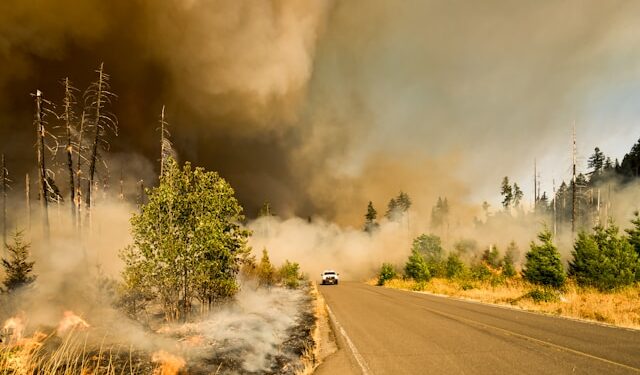Wildfires are an unfortunate reality for Los Angeles, with their frequency and intensity rising in recent years. From the devastating Woolsey Fire in 2018 to the Bobcat Fire of 2020, these incidents have left scars on communities, ecosystems, and the economy. However, they have also provided invaluable lessons. By reflecting on these events, LA can better prepare for future wildfire seasons and mitigate the risks they bring.
Recap of Recent Wildfires in LA
Los Angeles has seen some of the most destructive wildfires in California’s history. Here are two major examples that highlight the challenges:
The Woolsey Fire (2018)
- Impact: Burned nearly 97,000 acres, destroyed over 1,600 structures, and caused the evacuation of over 295,000 people.
- Cause: Downed power lines during dry, windy conditions.
- Lesson Learned: The need for stricter regulations on utility companies and improved infrastructure to withstand extreme weather.
The Bobcat Fire (2020)
- Impact: Burned more than 115,000 acres, making it one of the largest wildfires in LA County’s history. It caused significant damage to the Angeles National Forest.
- Cause: Dry vegetation and prolonged heat waves exacerbated by climate change.
- Lesson Learned: The critical role of forest management and the dangers of delayed responses.
Key Lessons from Recent Wildfires
1. The Importance of Early Detection
Early detection can make a significant difference in controlling wildfires before they escalate. Technologies such as drones, satellite imaging, and AI-driven fire detection systems have proven effective in identifying fires at their inception. LA needs to invest further in these tools to minimize response times.
2. Community Preparedness is Crucial
Wildfire preparedness at the community level can save lives. Evacuation drills, public awareness campaigns, and accessible resources for creating defensible space around homes are vital. The involvement of local organizations in educating residents has shown that prepared communities are more resilient.
3. Urban Planning and Wildfire-Prone Areas
The expansion of housing developments into wildfire-prone zones has increased the risk to lives and property. Stricter building codes, better zoning regulations, and the creation of buffer zones can help reduce vulnerabilities.
4. Resource Allocation and Emergency Response
Many wildfires have exposed gaps in firefighting resources, such as insufficient personnel and outdated equipment. Enhancing funding for fire departments and providing advanced training can significantly improve emergency response capabilities.
5. Climate Change as a Driving Force
The link between climate change and the worsening wildfire seasons is undeniable. Rising temperatures, prolonged droughts, and stronger winds have created conditions for larger and more destructive fires. Addressing climate change is essential to mitigating wildfire risks in the long term.
What Los Angeles Can Do Moving Forward
Improve Public Awareness
Regular wildfire preparedness campaigns can keep residents informed about risks and safety measures. Community events, social media outreach, and partnerships with schools and local organizations can help disseminate critical information.
Invest in Firefighting Resources
Enhancing firefighting capabilities is essential. LA should prioritize:
- Purchasing advanced equipment, such as aerial water tankers.
- Increasing the number of trained firefighters.
- Implementing AI-driven fire prediction systems to improve response times.
Enhance Land Use Policies
Urban planners must enforce stricter regulations for developments in high-risk areas. This includes maintaining firebreaks, encouraging the use of fire-resistant building materials, and limiting construction in wildfire-prone zones.
Strengthen Climate Action Plans
LA needs to double down on efforts to combat climate change by:
- Reducing greenhouse gas emissions.
- Promoting renewable energy sources.
- Advocating for statewide and national policies that address global warming.
Stories of Resilience and Success
Despite the devastation, there have been shining examples of resilience and innovation:
- Community Collaboration: Neighborhood groups in Topanga Canyon organized early evacuation drills and maintained defensible space, which significantly reduced fire damage during a recent blaze.
- Technological Innovation: The deployment of the ALERTWildfire camera network across California has helped detect wildfires faster, giving first responders a critical head start.
Call to Action for Residents and Authorities
Residents and local authorities both have a role to play in preparing for future wildfires:
- Residents: Stay informed, assemble emergency kits, and create defensible space around your property. Participate in community preparedness initiatives and evacuation drills.
- Authorities: Prioritize funding for firefighting resources, enforce stricter building codes, and invest in early detection technologies. Collaborate with environmental organizations to address climate change and its impact on wildfire seasons.
Conclusion
Wildfires are a part of Los Angeles’ reality, but they don’t have to be as destructive as they’ve been in recent years. By learning from the past, investing in technology, and fostering a culture of preparedness, LA can mitigate the impact of future wildfires. The time to act is now—for the safety of our communities, the preservation of our ecosystems, and the protection of future generations.





